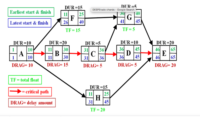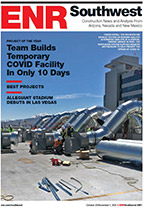


Construction project schedules have come a long way since the 1950s, when the critical path method of graphing milestones, activities and logic ties using algorithms to analyze work progress began to gain favor.
Today, CPM techniques dominate most construction project schedules. It's a rare general contractor or project superintendent who does not use critical-path scheduling software to diagram a project's multiple calendars, create a work breakdown structure, and map activities and logic ties between them, all of which help calculate project float times and completion dates.
But if today's powerful software tools are making scheduling and project analysis easier, then why are construction experts complaining that the quality of project schedules is getting worse?
"Because the software lets the end user do too many dumb things," says Jonathan Japka, a civil engineer by training and consultant on project management scheduling. "Most of the people who are practicing scheduling have never been formally trained, and they don't know what a good schedule or a bad schedule is. I always put the question to [schedulers] by asking, how did you learn? It's usually by mentors."
Japka, who is also a certified instructor of Primavera, Oracle's dominant scheduling platform, says he learned how to diagram a schedule manually—with one beginning and one end date—a skill that he still teaches today. "We learned the theory of scheduling before we [launched] any software," he adds. The tech-savvy generation of today, on the other hand, knows how to use the software and push all the buttons. "But it's the same analogy as with Microsoft Word," he adds. "Just because I know how to use the software doesn't mean I know how to write."
The influence of software tools on scheduling confusion continues to be a flashpoint in construction—especially over how "float," the extra time for activities, can be calculated or manipulated.
Threads of Controversy
Take a recent discussion thread among members of the 23,000-strong Primavera user group on networking website LinkedIn. It posed the question of whether scheduling abuse is now acceptable on projects, such as when schedulers use excessive ties—predecessor activities tied to successor activities with both start-to-start (SS) and finish-to-finish (FF) lags built into those activities, which can lead to confusion over float calculations and key milestones on a project.
"Using such tactics as the logic mentioned just to eat total float is just bad judgment and the company that allows this product out the door could possibly end up in arbitration down the road," wrote one commentator.
The problem, wrote another, is that companies are hiring unskilled schedulers and that too many companies, especially EPC firms, are letting schedulers drive the overall project, even when they have not been properly trained on construction techniques.
Further complicating the discussion are the dependencies of tasks on a project. David MacKay, a scheduling engineer at PCL Construction, noted that if a SS-FF relationship is responsibly used, it can be the most accurate way to reflect the reality of many construction sequences. "I find many situations totally impractical to schedule FS," or "finish-to-start," meaning once one activity finishes, the next one starts. Take, for example one of dozens of situations: a floor rough-in in a building, he wrote.




